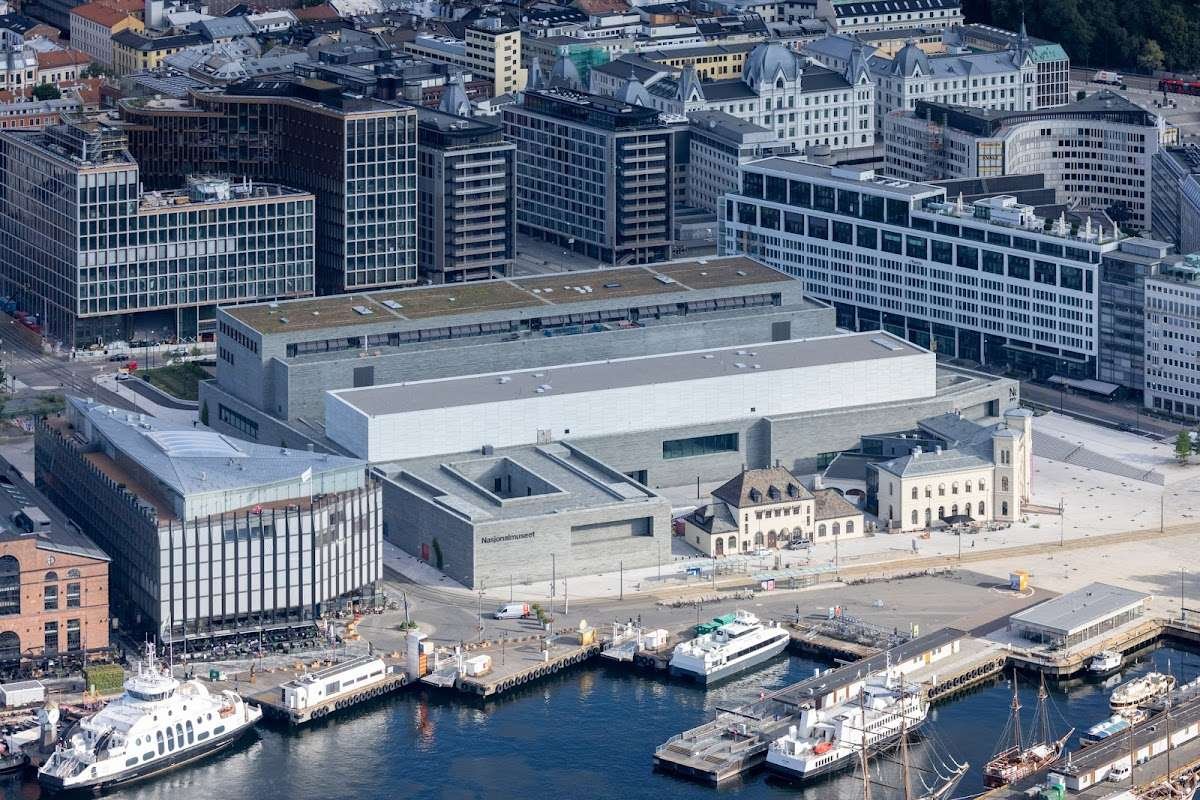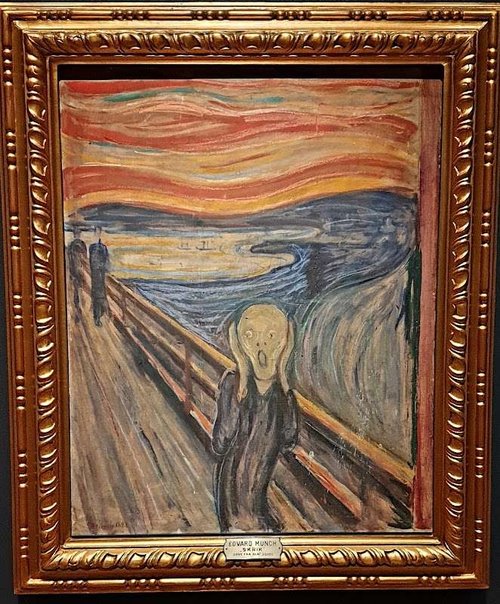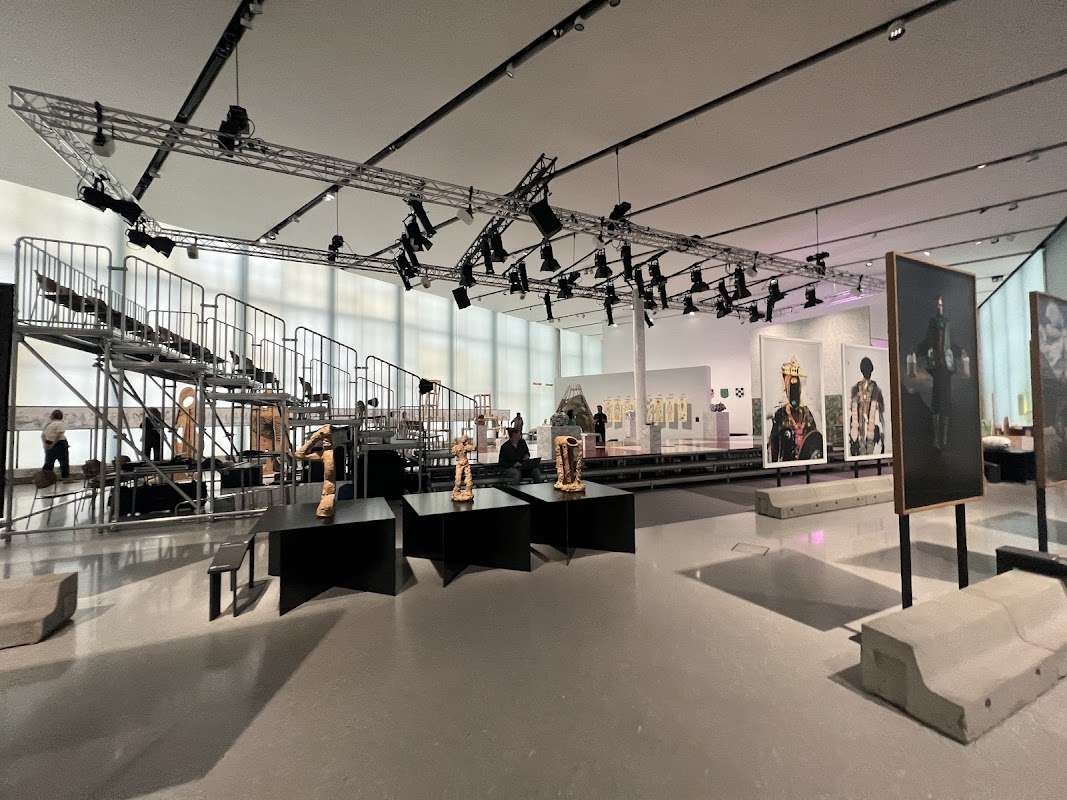Norwegian national art: how the new National Museum in Oslo is organised
The new National Museum in Oslo brings together the entire history of Norwegian art under one roof, showcasing everything from Romanticism and fjord landscapes to design, fashion and architecture. Opened in 2022 on the site of the former Vestbanen railway station, the museum immediately became the largest art museum in Northern Europe. Visitors can admire iconic paintings, explore the dedicated "Munch Room", and discover the design halls and the striking "Light Hall", a luminous rooftop space designed for major exhibitions. Below, you will find answers to the most frequently asked questions, such as how the museum differs from the former National Gallery, how the permanent exhibitions are organised, and where to find the main masterpieces.

What is the new National Museum like compared to the old National Gallery? Where is the main collection now?
The old National Gallery closed in 2019, and its collections (along with the collections of decorative and applied arts and the Museum of Modern Art) moved to the new National Museum building. This means that the "main" attractions are now in one place: paintings, sculptures, design, fashion and architecture are brought together in a single permanent exhibition. The old National Gallery building is not a museum now. It is a different building called the National Museum – Architecture, which is still in Bankplassen.
How is the permanent exhibition "The Collection" organised by floor?
The exhibition is spread over two floors and is arranged in order of time. On the first floor, you can see art and design from ancient times to now (furniture, textiles, porcelain, fashion). The second floor has paintings, sculptures and sections about architecture. The transitions between the halls make it easy to understand the change from one period to another. This layout helps visitors see how art and material culture go together. There are lots of halls, and they are all numbered so you can find your way around easily.
Which masterpieces should you really see, from Romanticism to Modernism?
Start with Tidemann and Gude's "Wedding Procession at Hardangerfjord," the perfect example of Norwegian Romanticism. Then take a look at Harriet Bakker's "Blue Interior" and Harald Solberg's symbolist "Winter Night Landscape in the Mountains" (), one of the Norwegians' favourite paintings. These works clearly show how artists moved from painting landscapes to creating more psychological and colourful works.
Where can you find Munch's "The Scream" and what is the "Munch Room"?
The National Museum has one of the original colour versions of The Scream (1893) by Edvard Munch. The museum also has its own "Munch Room" with other important works by the artist, including Madonna and The Dance of Life. The exhibition is updated regularly, but it is here that you will see The Scream in the context of European art. You can see other versions of The Scream at the MUNCH museum in Byernes. One of them is usually on display there all the time.

What is the "Light Hall" and why is everyone talking about it?
The Light Hall is a big, bright room on the roof (it's about 2,400 m² in size) where you can put temporary projects. Its walls are made of thin marble slabs stuck between sheets of glass. During the day, the hall glows softly, and at night it turns into a bright rectangle above the city. The museum uses this space to start big art projects and commissions. These include the first performance of "I Call It Art" and other artworks that were shown later.
What is the museum made of and why is its architecture so impressive?
The outside of the buildings is covered in Norwegian slate from Oppdal — the idea is to "bring the mountain to the city". It looks plain from the outside, with a big stone building with a bright "Light Hall" at the top. Inside, there are rooms with classical shapes and a "sky" of uniform artificial light. This approach focuses on the works rather than the shell and creates a calm space for viewing art and design. The architects are Kleihues + Schuwerk.
What does "largest in Northern Europe" mean in numbers?
The museum opened on 11 June 2022 and brought together collections that were previously spread across different buildings. The permanent exhibitions take up around 10,000 m² and are spread over 86 rooms, while the Light Hall adds another 2,400 m² for temporary exhibitions. The result is the biggest art museum in the area, with thousands of artworks on display.
How are the National Museum Oslo, the National Gallery Oslo and the National Museum – Architecture different?
The National Museum (Oslo) / National Museum of Art, Architecture and Design is the current institution and new building on the waterfront. The National Gallery Oslo is the historical name of the old building on Universitetsgata. Its collections have been moved to the new museum. The National Museum – Architecture is a separate venue in the Bankplassen district. It is dedicated specifically to architecture and architectural research.
What are the most important aspects of Norwegian identity?
The museum displays a range of different types of art and objects, from carved chests and costumes to paintings and models of buildings. The new scene was marked by the exhibition I Call It Art in the Light Hall, which was later joined by international commissions (the Fredriksen Family Commissions series). This approach shows national art history as a living dialogue with the present.
How can you find your way around the "large collection" without getting tired?
It is easy to go from the "icons" to the discoveries. Start on the second floor, where you'll find the "stars" (Munch, Solberg, Tideemann and Gude). Then, head down to the first floor, where you'll find fashion, furniture, glass and 20th–21st-century design. Then go to the Light Hall to see the current project. If you like audio, the museum has a selection of short stories about the halls (about three hours of listening in total).
What "hidden gems" are easy to miss?
As well as the "icons", look at Harriet Bakker's "Blue Interior", which shows Norwegian daylight and subtle use of colour; look at the graphics and decorative panels, where decoration and nature "talk" to modernism. In the architecture sections, look for models and photos of Norwegian modernists. These show why the country values simplicity of form and honesty of materials so highly.

How is the museum connected to other cultural places in Oslo?
The new National Museum is part of a "cultural belt" along the waterfront. Next door is the City Hall and Aker Brygge, across the bay is the Opera House and Deichman Library, and on the eastern waterfront is MUNCH. Fans of Munch's paintings will love this double painting: you can see The Scream in its national context here and compare it with the large-scale series at MUNCH.
The National Museum is so much more than just a "replacement for a gallery" – it's an incredible encyclopaedia of Norwegian visual culture! It's so exciting to see how the country's unique artistic style has evolved from its stunning fjord landscapes, vibrant crafts, and simple yet elegant architecture. At the heart of this transformation is Munch's iconic masterpiece, 'The Scream,' which dominated the era, and the vibrant Light Hall, which served as a stage for emerging talents. Take your time — room by room, the picture comes together to form a vivid, compelling story.
We would absolutely love to hear your thoughts in the comments!
If you have any interesting photos, personal experiences or questions on the topic, we would love to hear them – please leave a comment! We can't wait to hear from you, because we're on a mission to create the most popular and useful blog about Norway!





1 comment
Log in to leave a comment